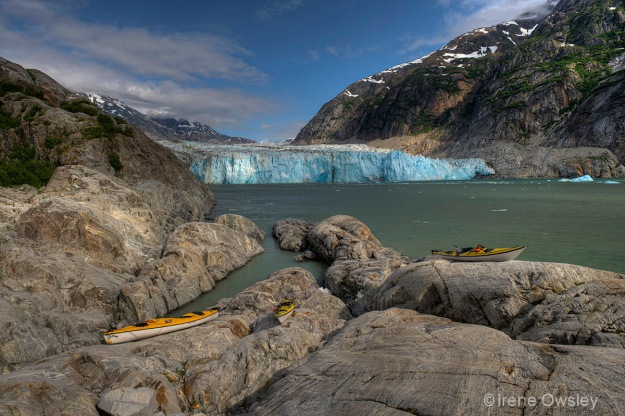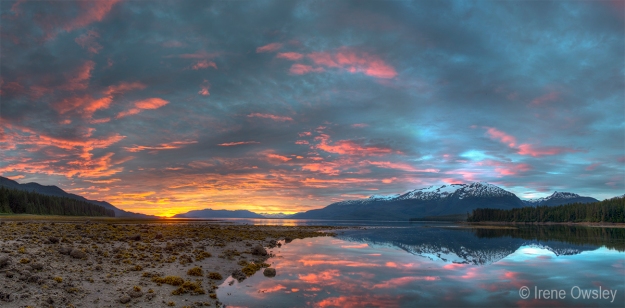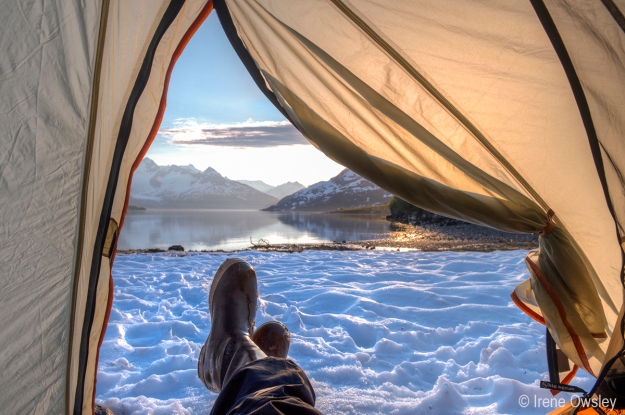My guest blogger, Susan Imhoff Bird, is the author of Howl: of Woman and Wolf. Commemorating twenty years since the wolf’s return to the American West, Howl explores the passions and controversies surrounding nature’s most fascinating predator, while also delving into the reality of being human in today’s world.
My Alaska, My Wolf.
I dream Alaska.
Immense, white. Fanged, feathered, furred. Hooded and gloved and without
question, booted. Mukluks, Juneau boots. Huddled homes, expansive shorelines,
seventy shades of blue to be discovered in sky and lake, river and ocean. Great
and ferocious predators, thickened by fur and hardened by lot. Bears—black,
polar, brown—wolverines and lynx, foxes, wolves. And the winged: bald and
golden eagles, hawks and osprey, ravens and owls—great gray, northern hawk, and
boreal—the fantastically named gyrfalcon, curving a path high above them all.
My Alaska is
massive, resplendent, its edges blurring into towering, snow-sculpted
mountains, bereft of trees. But if you peer closely, large paw prints traverse
the slopes, dissolving into shadows cast by boulders, by landslide, by earthen
tumult.
When I started
studying wolves, I went on a late spring day to a valley that had, a month
before, watched its snow melt into the ground and drip from banks into its
rivers. I saw but one wolf that sojourn, though I’d hoped for more. I stood
with a bevy of others, squinting into scopes, and watched the solitary wolf
tear sustenance from the carcass of a bison calf. The Lamar Valley was
well-filled with bison, cranes, and coyotes, while eagles spiraled above and a
grizzly family pawed through a rotting tree trunk on a far hillside, but of
wolves, I glimpsed only the one.
I returned to
Yellowstone five months later, arriving the day after a blizzard, and learned
to search for wolves on snow-dusted sage plains, on rocky outcroppings, on
ice-laced creeks and tree-dotted buttes. Alaska, I thought, is more like this.
I saw wolves—two who circled within forty feet of where I stood on frozen
boots, two more a hundred yards away, and a family of eight who lounged atop a
ridge, brought to near life-size by a powerful scope, whiskers flicking, eyes
blinking, an exchange of paw swipes by two black cubs. Another morning, a pack
of wolves was so far away that in my scope, they were lumps of gray-brown upon
a rocky hill of gray-brown. Still others I tracked as they ran through
winter-stiff grass and across ice bridges, only to disappear again in the
shrub.
Soon I began to
dream a wolf. She travels sloping mountain flanks, she sniffs for fellow and
foe. She looks upon the world through eyes of gold, which glow on moon bright
nights. Life is spent in snow and sun and rain, in pursuit of elk, caribou,
moose, that routinely elude and escape. She sleeps curled nose to tail, she
naps while the sun is high. She partners for life. She howls to bring her
family close, and she howls to warn others away. She is guided by hunger, by
instinct, by love, which are often one and the same. Her coat is a hundred
shades of time-worn granite. My wolf is wild in every way, with a spirit so wide
its edges blur. Into mine.
In my Alaska, live
wolves. In my wolf, lives Alaska.
Find out more about Howl and Susan Imhoff Bird at www.susanimhoffbird.com
Find out more about Howl and Susan Imhoff Bird at www.susanimhoffbird.com





















![[FEATURED IN SMITHSONIAN EXHIBITION] Glacial stream, Endicott Arm. Tracy Arm-Ford’s Terror Wilderness, Tongass National Forest, Southeast Alaska.](https://thinkingwilderness.files.wordpress.com/2015/02/owsley_120722_streambed_endicott.jpg?w=625&h=316)

















